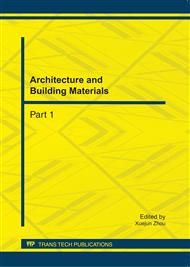p.1218
p.1222
p.1228
p.1233
p.1239
p.1243
p.1247
p.1251
p.1255
Numerical Analysis of the Pit Excavation Influence on Foundation Piles
Abstract:
Excavation of the soil is actually the unloading process. The unloading process of soil makes the soil uplift, and the soil uplift is restricted by the pit engineering piles. And then, engineering piles should bear the vertical upwards pulling force caused by soil uplift. When pulling force is huge and tensile bearing capacity of pile is low, engineering piles could be pulled apart, and it is harmful to bearing capacity and durability of engineering piles. This paper adopts the finite element method to simulate engineering piles during pit excavation, and studies the traits of engineering piles in various excavation working conditions and different position. The computational results show that the deeper pit, the bigger displacement and tensile forces of piles, and the farther away from edges of the pit, the bigger displacement and forces of piles. In addition, the paper also gives a formula about the relationship between depth of pit excavation and uplift force on piles.
Info:
Periodical:
Pages:
1239-1242
Citation:
Online since:
September 2011
Authors:
Keywords:
Price:
Сopyright:
© 2011 Trans Tech Publications Ltd. All Rights Reserved
Share:
Citation:


